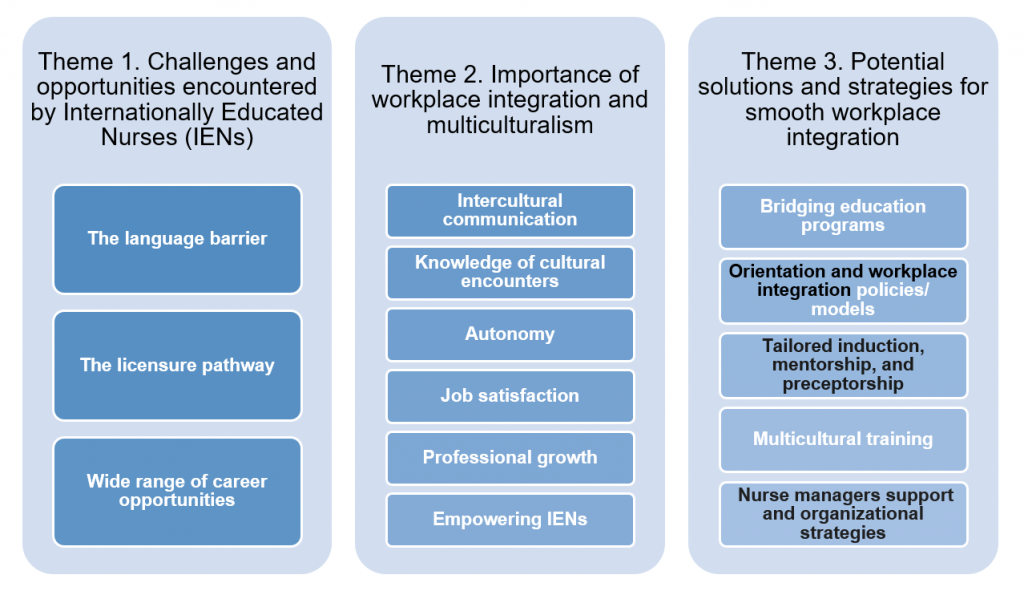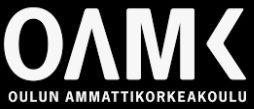As international mobility and the proportion of citizens with a foreign background increase in Finland, there is an urgent need to establish workplace integration in the healthcare sectors to ensure patient safety and quality of care. Internationalization and multiculturalism have been recognised as driving forces that impacts the current working life of nurses. Globally, 13 million nurses are needed to fill-up the nursing shortage. In Finland, to effectively address the staffing shortage, over 20,000 healthcare professionals are needed. This phenomenon resulted in the active recruitment of Internationally Educated Nurses (IENs) from developing countries.
It is timely needed for the Finnish healthcare system to prepare for organizational strategies to address IENs’ smooth workplace integration and improve multiculturalism competencies among healthcare professionals [1] [2] [3]. In a survey conducted by Tehy (2023), findings showed that the social and healthcare sector in Finland is unprepared to integrate IENs [4]. Most respondents (60 %) do not know if preparations have been made, and 23 percent indicate that there have been no preparations at all [4].
Aim
This article aims to discuss what are the challenges and opportunities encountered by IENs. This paper will highlight the importance of workplace integration and multiculturalism. Lastly, this paper will deliberate about potential solutions and strategies for smooth workplace integration.
Methods
Discursive approach is the suitable methodology of this article because of its crucial feature in research. In this approach, behavior is viewed as meaningful by virtue of its articulation with a system of discourse [5]. In a discourse analysis, it includes the following critical steps: a) choosing the text, b) identifying the explicit purpose, c) construction of major concepts, naming and categorizing, d) construction of subject positions, and e) construction of reality and social relations and implications for the practice of nursing [5].
Discussion
The concept of workplace integration and multiculturalism
In this section, three themes will be discussed: theme1 is about the challenges and opportunities encountered by IENs, theme 2 highlights the importance of workplace integration and multiculturalism, and lastly, theme 3 discusses the potential solutions and strategies for smooth workplace integration. (Figure 1.)

Theme 1. Challenges and opportunities encountered by Internationally Educated Nurses (IENs)
The language barrier
As international mobility increases, working in the future requires versatile language skills, understanding of intercultural communication. Unfortunately, IENs faced challenges due to language barriers and cultural differences [6] [7] [8]. Finnish language presents unique challenges due to its distinct expression of concepts compared to other European languages. Insufficient Finnish language proficiency leads to limited access to opportunities, discrimination, limited career development, and increased nurses’ intentions to leave [9]. Language barriers and cultural disparities often lead to miscommunication and misunderstandings.
The licensure pathway
Nowadays, the number of IENs are rising exponentially particularly in foreign countries, however challenges are also growing significantly at the same time, which requires thorough consideration of various factors. A great picture of this, includes obtaining the necessary requirements such as documents and proper translation to meet the qualifications for working IENs. This process is comprehensive, critical for both time and financial means.
IENs go through a strict process to become suitable nurses. Transparent education models and acknowledgement of IENs qualifications is inadequate that leads to deskilling and inhibit IENs from practising [8].
The recognition of prior education and clinical knowledge to becoming a registered nurse (sairaanhoitaja) in Finland for IENs is a complex and a rigorous pathway. The process takes time and requires fluency of finnish language, at least B1-B2 intermediate level of language competency [10].
Wide range of career opportunities
There are many reasons why IENs migrate to foreign countries. Nurses’ migration encompassed both economic and non-economic benefits. Higher salary, better work satisfaction, and better quality of life are some of the compelling motivating factors [11] [12].
Finland is well-known as the number one happiest country for seven consecutive years according to World Happiness Report [13] [14]. Finnish happiness is explained by the high levels of trust and freedom in its society, which research shows contributes to well-being and productivity [13] [14]. In addition, Finland’s excellent employee benefits makes the country attractive for IENs to migrate [15]. As a foreign employee in Finland, IENs have the same rights and responsibilities at work as a Finnish employee.
Theme 2. Importance of workplace integration and multiculturalism
The ability to make personal decisions and work autonomy are critical factors that impact job satisfaction among IENs [15] [16]. Versatile language skills, knowledge of cultural encounters and understanding of intercultural communication are important in the healthcare sector of Finland. To achieve better quality of job satisfaction and retention within the healthcare system [17], it is important of offer IENs the opportunity for professional growth, hence empowering IENs in their roles.
Theme 3. Potential solutions and strategies for smooth workplace integration
In a systematic review of Cubelo et al. (2024) titled ”The impact of bridging education programs on internationally educated nurses becoming registered nurses in high-income countries” highlighted key factors such as language proficiency, cultural adaptation, and nursing competence, emphasizing the need for targeted support and continuous education for IENs to ensure their successful integration into the healthcare workforce [18].
Optimizing communication efficacy by utilizing bilingual approach to foster precise information transmission is crucial for IENs to learn and improve effective communication [7] [19]. Creating a national model for the recognition and qualification process of IENs requires collaboration with different sectors including nurse leaders, policy makers and higher education institutions [8] [19]. Cross-border partnerships between educational institutions and researchers would facilitate the exchange of best practices of smooth workplace integration [18] [19].
Strategies such as organizational equity to meet the specific needs of the culturally and linguistically diverse nursing workforce are essential. Organizational policies for anti-discrimination and racism, language and cultural training, tailored induction, mentorship, and preceptorship are urgently needed to be establish in the workplace and be implemented at national level [8] [9] [19]. Multicultural training should also be provided to both local and IENs to facilitate cultural adaptation and diversity in learning.
Role of nurse manager for smooth integration, work well-being, and retention
The role of the nurse manager and organizational strategies are essential components of smooth integration, work wellbeing and retention. Creating a culture of inclusiveness, organizational acceptance, and acknowledgement of culturally and linguistically diverse nurses’ competence needs to established and clear. Tailored orientation programs and mentorship are the most common organizational strategies for supporting workplace integration and professional competence development [7] [9] [18] [19] [20]. Nurse managers play an important role in fostering a safe work environment that respects culturally and linguistically diversity of nursing workforce [21].
Conclusion
Internationally educated nurses can help address the significant nurse shortages around the globe. Innovative strategies which involve education, cultural and system orientation, policies and leadership that promote workplace integration are essential in the attraction and retention of nurses. Recognition of the challenges and opportunities faced by IENs, multiculturalism competency, nurses managers leadership and support, and policies for workplace integration are vital for workplace harmony.
Responding to nursing shortage challenges poses collective collaboration and urges governments to invest in nursing education advancement to create a safe and inclusive workplace, enhancing the current workplace environment. The support of nurse managers and strong leadership are crucial. Collaborative effort is important to ensure workplace integration and support internationally educated nurses in their professional development. This involves continuous training for both local and international nursing staff, orientation programs not only for the foreign nurses but also for the local nurses, patients and relatives, and national health policies.
Anndra Parviainen
Studies in Bachelor of Healthcare, Nursing in Oulu University of Applied Sciences
Jorge Albert Lopez
Studies in Bachelor of Healthcare, Nursing in Oulu University of Applied Sciences
Shiki Charelle Aquino
Studies in Bachelor of Healthcare, Nursing in Oulu University of Applied Sciences
References
[1] Nalungwe, C. J. (2016). The Integration of Immigrant nurses into the Finnish Nursing society & culture [Master’s Thesis, Laurea-ammattikorkeakoulu]. Theseus. https://urn.fi/URN:NBN:fi:amk-2016112417180
[2] Haakenstad, A., Irvine, C. M. S., Knight, M., Bintz, C., Aravkin, A. Y., Zheng, P., Gupta, V., Abrigo, M. R. M., Abushouk, A. I., Adebayo, O. M., Agarwal, G., Alahdab, F., Al-Aly, Z., Alam, K., Alanzi, T. K., Alcalde-Rabanal, J. E., Alipour, V., Alvis-Guzman, N., Amit, A. M. L., … Lozano, R. (2022). Measuring the availability of human resources for health and its relationship to universal health coverage for 204 countries and territories from 1990 to 2019: a systematic analysis for the Global Burden of Disease Study 2019. Lancet, 399(10341), 2129–54. https://doi.org/10.1016/S0140-6736(22)00532-3
[3] Punkari, P. (1.3.2023). Pula sairaanhoitajista ja lahihoitajista on kasvanut räjähdysmäisesti kahden vuoden aikana koko Suomessa. Yle. https://yle.fi/a/74-20020199
[4] Tehy. (12.9.2023). Tehy survey: The social and health care sector is not sufficiently prepared to welcome nurses with a foreign background [bulletin]. https://www.tehy.fi/en/bulletin/tehy-survey-social-and-health-care-sector-not-sufficiently-prepared-welcome-nurses-foreign
[5] Crowe, M. (2005). Discourse analysis: Towards an understanding of its place in nursing. Journal of Advanced Nursing, 51(1), 55–63. https://doi.org/10.1111/j.1365-2648.2005.03461.x
[6] Cubelo, F. (2023). Linguistic racism towards internationally educated nurses in Finland: Critical reflective analysis. Public Health Nursing, 40(6), 813–816. https://doi.org/10.1111/phn.13233
[7] Cubelo, F. (2023). Bilingual modified flipped learning in international nursing education: A discursive approach. International Journal of Nursing Science, 10(4), 562–567. https://doi.org/10.1016/j.ijnss.2023.09.006
[8] Cubelo, F., Langari, M. N. M., Jokiniemi, K., & Turunen, H. (2024). Recognition of nursing qualification and credentialing pathway of Filipino nurses in Finland: A qualitative study. International Nursing Review, 71(3), 661–669. https://doi.org/10.1111/inr.12901
[9] Kamau, S., Koskenranta, M., Isakov, T. M., Kuivila, H., Oikarainen, A., Tomietto, M., & Mikkonen, M. (2023). Culturally and linguistically diverse registered nurses’ experiences of integration into nursing workforce – A qualitative descriptive study. Nurse Education Today, 121, 105700. https://doi.org/10.1016/j.nedt.2022.105700
[10] Valvira, National Supervisory Authority for Welfare and Health. (2024). Registered nurse trained outside of the EU/EEA. https://valvira.fi/en/rights-to-practise/registered-nurse-trained-outside-of-the-eu/eea
[11] Smith, D. M., & Gillin, N. (2021). Filipino nurse migration to the UK: Understanding migration choices from an ontological security-seeking perspective. Social Science & Medicine, 276, 113881. https://doi.org/10.1016/j.socscimed.2021.113881
[12] Okólski, M. (2006). Costs and benefits of migration for Central European countries (CMR Working Papers No. 7/65). Centre of Migration Research. https://www.migracje.uw.edu.pl/wp-content/uploads/2016/12/007_65-1.pdf
[13] YLE News. (20.3.2024). Finland tops world happiness ranking for 7th year in a row. Retrieved 26.9.2024 from https://yle.fi/a/74-20080027
[14] Helliwell, J. F., Layard, R., Sachs, J. D., De Neve, J.-E., Aknin, L. B., & Wang, S. (Eds.). (2024). World Happiness Report 2024. University of Oxford: Wellbeing Research Centre. https://worldhappiness.report/ed/2024/
[15] Botan, S., & Myllys, K. (2024). Experiences of Filipino Immigrant Nurses in Finland [Thesis, Seinäjoki University of Applied Sciences]. Theseus. https://urn.fi/URN:NBN:fi:amk-2024062923914
[16] Cubelo, F., Al Jabri, F., Jokiniemi, K., & Turunen, H. (2024). Factors influencing job satisfaction and professional competencies in clinical practice among internationally educated nurses during the migration journey: A mixed-methods systematic review. Scandinavian journal of Caring Sciences, 10.1111/scs.13280. Advance online publication. https://doi.org/10.1111/scs.13280
[17] Cubelo, F. (2023). Self-revocation of nurse licences in Finland – nursing response to deteriorating workplace and patient safety: Implications for future nursing action. International Nursing Review, 70(3), 286–90. https://doi.org/10.1111/inr.12834
[18] Cubelo, F., Parviainen, A., & Kohanová, D. (2024). The impact of bridging education programs on internationally educated nurses becoming registered nurses in high-income countries: A mixed-methods systematic review. International Nursing Review. Epub ahead of print. https://doi.org/10.1111/inr.13038
[19] Kamau, S., Koskenranta, M., Kuivila, H., Oikarainen, A., Tomietto, M., Juntunen, J., Tuomikoski, A-M., & Mikkonen, K. (2022). Integration strategies and models to support transition and adaptation of culturally and linguistically diverse nursing staff into healthcare environments: An umbrella review. International Journal of Nursing Studies, 136, 104377. https://doi.org/10.1016/j.ijnurstu.2022.104377
[20] Syeda, Y. (2023). Challenges faced by immigrant nurses when integrating into the Finnish healthcare system [Thesis, KAMK University of Applied Sciences]. Theseus. https://urn.fi/URN:NBN:fi:amk-2023121437152
[21] Ramji, Z., & Etowa, J. (2018). Workplace integration: Key considerations for internationally educated nurses and employers. Administrative Sciences, 8(1), 2. https://doi.org/10.3390/admsci8010002

Vastaa
Sinun täytyy kirjautua sisään kommentoidaksesi.